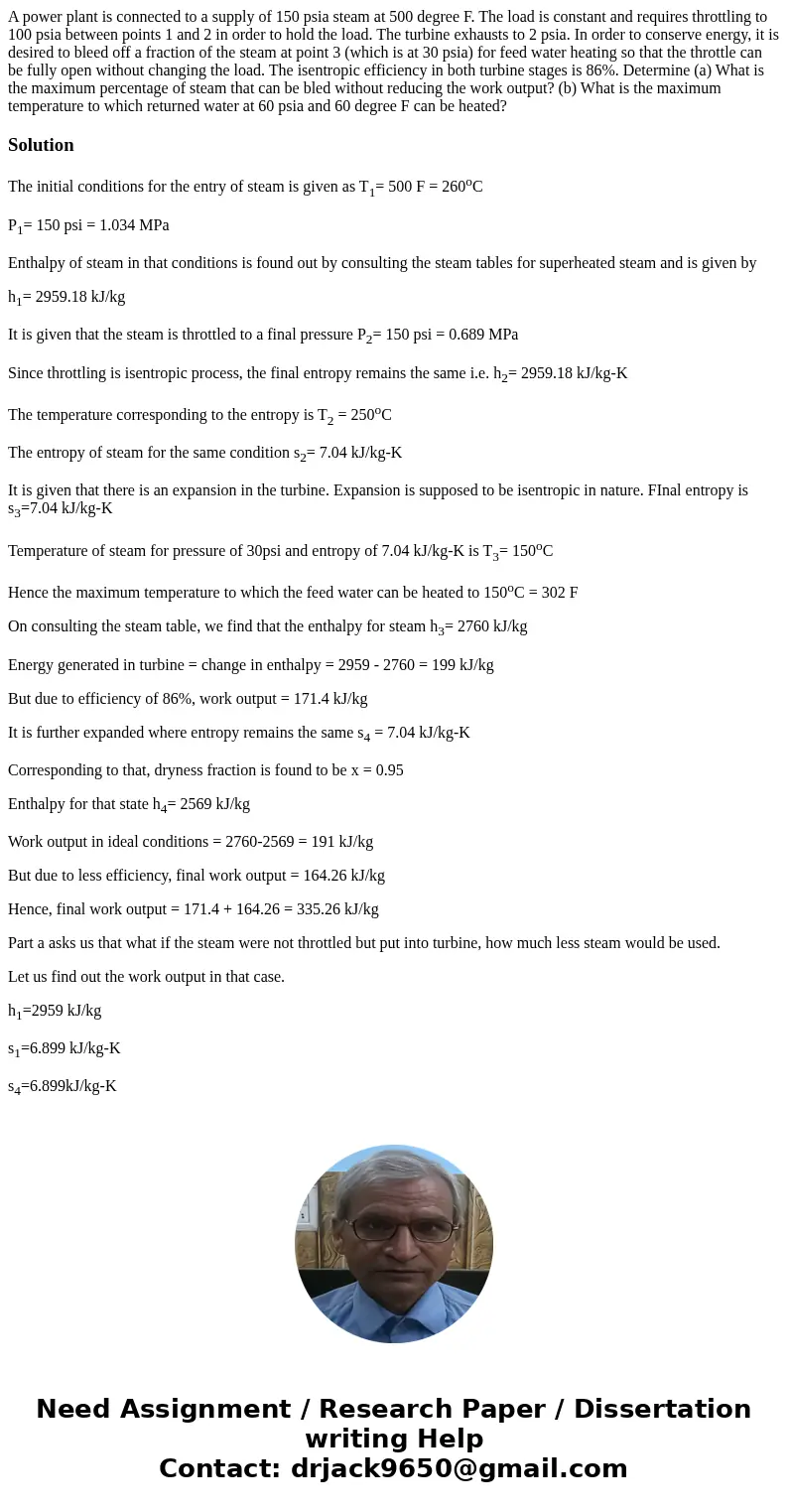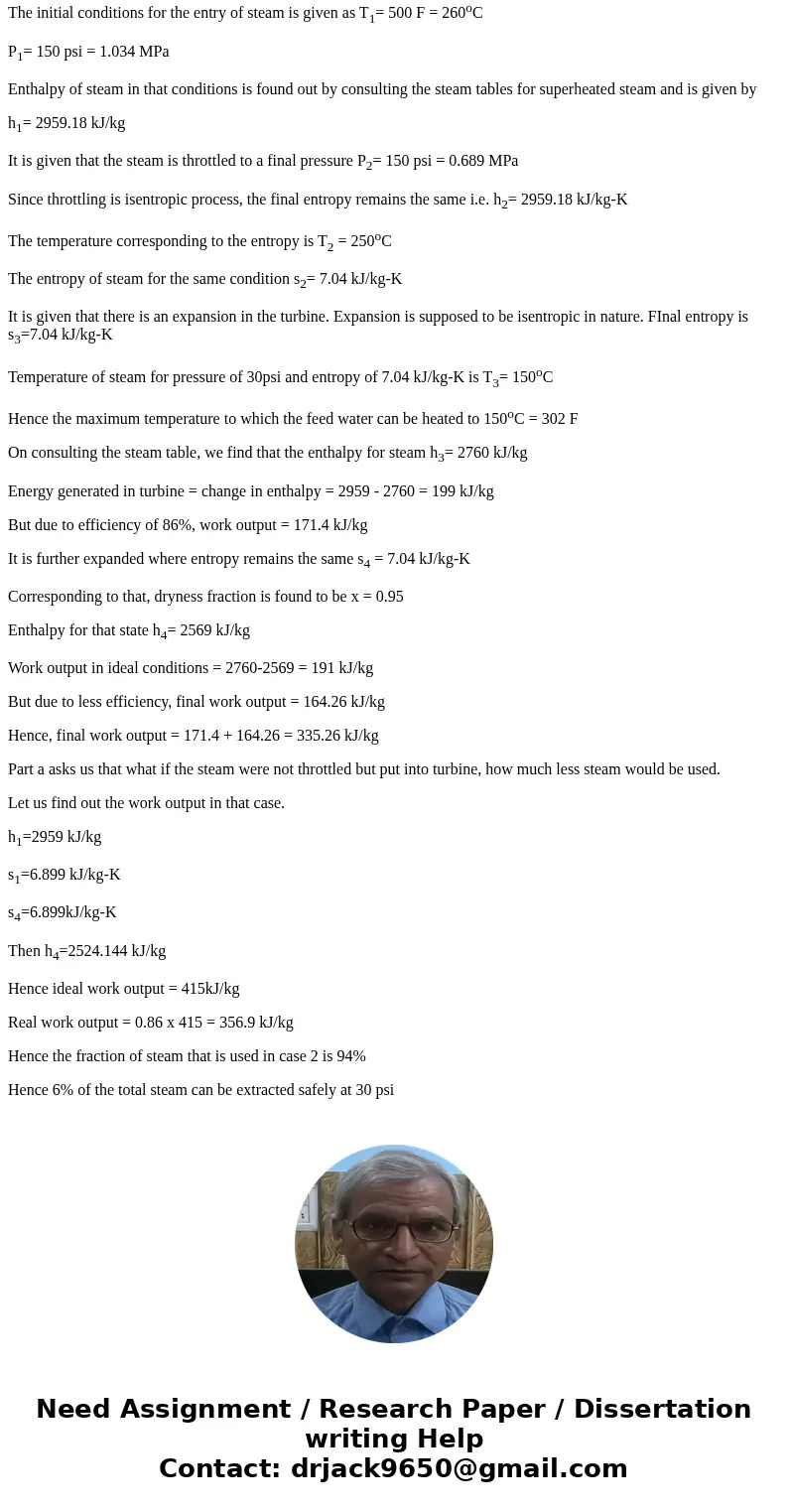A power plant is connected to a supply of 150 psia steam at
Solution
The initial conditions for the entry of steam is given as T1= 500 F = 260oC
P1= 150 psi = 1.034 MPa
Enthalpy of steam in that conditions is found out by consulting the steam tables for superheated steam and is given by
h1= 2959.18 kJ/kg
It is given that the steam is throttled to a final pressure P2= 150 psi = 0.689 MPa
Since throttling is isentropic process, the final entropy remains the same i.e. h2= 2959.18 kJ/kg-K
The temperature corresponding to the entropy is T2 = 250oC
The entropy of steam for the same condition s2= 7.04 kJ/kg-K
It is given that there is an expansion in the turbine. Expansion is supposed to be isentropic in nature. FInal entropy is s3=7.04 kJ/kg-K
Temperature of steam for pressure of 30psi and entropy of 7.04 kJ/kg-K is T3= 150oC
Hence the maximum temperature to which the feed water can be heated to 150oC = 302 F
On consulting the steam table, we find that the enthalpy for steam h3= 2760 kJ/kg
Energy generated in turbine = change in enthalpy = 2959 - 2760 = 199 kJ/kg
But due to efficiency of 86%, work output = 171.4 kJ/kg
It is further expanded where entropy remains the same s4 = 7.04 kJ/kg-K
Corresponding to that, dryness fraction is found to be x = 0.95
Enthalpy for that state h4= 2569 kJ/kg
Work output in ideal conditions = 2760-2569 = 191 kJ/kg
But due to less efficiency, final work output = 164.26 kJ/kg
Hence, final work output = 171.4 + 164.26 = 335.26 kJ/kg
Part a asks us that what if the steam were not throttled but put into turbine, how much less steam would be used.
Let us find out the work output in that case.
h1=2959 kJ/kg
s1=6.899 kJ/kg-K
s4=6.899kJ/kg-K
Then h4=2524.144 kJ/kg
Hence ideal work output = 415kJ/kg
Real work output = 0.86 x 415 = 356.9 kJ/kg
Hence the fraction of steam that is used in case 2 is 94%
Hence 6% of the total steam can be extracted safely at 30 psi


 Homework Sourse
Homework Sourse